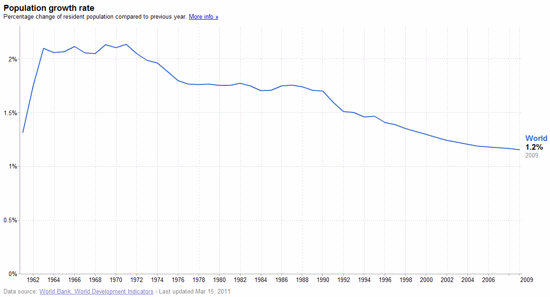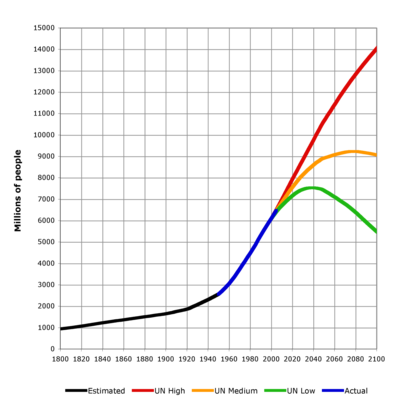Cross-posted at Climate Progress.
UPDATE: I had a good conversation with the co-author Didier Sornette. This was a draft analysis: They made a numerical mistake in one of the footnotes and used some inapt wording in a couple of places, none of which changes the main conclusion about CO2 concentrations. They will be revising the paper and I will make some changes below.
Recent climate science is unequivocal that human civilization is on the precipice. Climate science also finds that we are pouring carbon dioxide pollution into the atmosphere at an unsustainable rate. A 2008 Nature Geoscience study found that humans were boosting CO2 levels 14,000 times faster than nature, overwhelming slow negative feedbacks.
That study found, “the mean long-term trend of atmospheric CO2 levels is no more than 22 p.p.m.v. over the past 610,000 years.” Humans have run up CO2 levels 100 ppm over the last two centuries! The author of that study noted, “Right now we have put the system entirely out of equilibrium”
It turns out that a purely mathematical analysis, “Evidence for super-exponentially accelerating atmospheric carbon dioxide growth,” comes to a similar conclusion.
The paper itself is mostly mathematically and essentially agnostic on climate science. But the conclusions are as stark as any in the climate literature:
Overall, the evidence presented here does not augur well for the future.
- Notwithstanding a lot of discussions, international meetings, prevalence in the media, atmospheric CO2 content growth continues unabated with a clear faster-than-exponential behavior. On the face of this evidence using data until 2009, stabilizing atmospheric carbon dioxide emissions at levels reached in 1990 for instance seems very ambitious, if not utterly unrealistic. We are not pessimistic. We think that only evidence-based decision making can lead to progress. The present evidence gives some measure of the enormous challenges to control our CO2 emissions to acceptable levels.
Indeed.
Of course, exponential growth is more than worrisome enough.
That said, we appear to have amplifying feedbacks in overabundance (see “NSIDC bombshell: Thawing permafrost feedback will turn Arctic from carbon sink to source in the 2020s, releasing 100 billion tons of carbon by 2100“).
The solution certainly isn’t easy, but it is, at the same time, straightforward — with benefits that vastly exceed its low net-cost (see “The full global warming solution: How the world can stabilize at 350 to 450 ppm“).
As for “prevalence in the media,” that certainly hasn’t been super-exponential or even exponential or even growing — heck, it’s been shrinking (see “Silence of the Lambs: Media herd’s coverage of climate change “fell off the map” in 2010“).
It is high time for people outside of the climate science community to speak out about how unsustainable our emissions are (see Lonnie Thompson on why climatologists are speaking out: “Virtually all of us are now convinced that global warming poses a clear and present danger to civilization”).
You can read the fascinating bio of one of the authors, Didier Sornette, an expert on risk analysis, here.
UPDATE ON POPULATION
The study states in the abstract:
Our empirical calibrations con firm that human population has decelerated from its previous super-exponential growth until 1960 to “just” an exponential growth, but with no sign of more deceleration.
And its population conclusion is:
The human population is still growing at an exponential rate and there is no sign in the data that the growth rate is decreasing. Many argue that economic developments and education of women will lead to a decreased growth rate and an eventual stabilization of human population. This is not yet observed in the population dynamics, when integrated worldwide. Let us hope that the stabilization of the human population will occur endogenously by self-regulation, rather than by more stringent finite carrying capacity constraintsthat can be expected to lead to severe strains on a significant fraction of the population.
Those statements are at odds with the study’s own chart on population and this statement in the text:
… the growth rate of the World population was a strongly increasing function of time till the late 1950s. A sharp decrease of the growth rate occurred, then followed by a resumed acceleration till its peak in 1964, from which a slow decrease can be observed.
I asked Sornette about the inconsistency, and he realized that their use of language was inapt and needed to be changed. He was referring to the seeming slowdown very recently in the rate of decrease of population growth:
I don’t write much on population here — see “Consumption dwarfs population as main global warming threat“ for the reasons — so I didn’t look at the statements on population closely enough in Sornette’s draft paper. My bad.
It is, of course, widely believed world population will stabilize by mid-century:
World population from 1800 to 2100, based on UN 2004 projections (red, orange, green) and US Census Bureau historical estimates (black).
Sornette’s point on population was primarily that the very recent trend is not consistent with the rosier population projections — and we’re already well past the planet’s carry-capacity. Hard to argue with that last point.
There’s also a dumb mathematical error in a footnote that is transparently at odds with the data (including the data in the study), which the anti-science crowd has naturally pounced on. It isn’t germane to the study’s main conclusions.
Sornette is now working on a revision.
Related Posts:
- Science stunner: On our current emissions path, CO2 levels in 2100 will hit levels last seen when the Earth was 29°F (16°C) hotter
- Nature Geoscience: Oceans are acidifying 10 times faster today than 55 million years ago when a mass extinction of marine species occurred.
- Royal Society special issue details ‘hellish vision’ of 7°F (4°C) world — which we may face in the 2060s!



